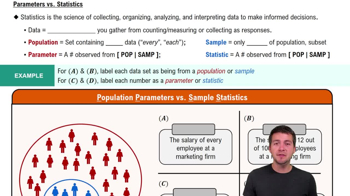Here are the essential concepts you must grasp in order to answer the question correctly.
Levels of Measurement
Levels of measurement refer to the different ways data can be categorized and quantified. There are four primary levels: nominal, ordinal, interval, and ratio. Each level has distinct characteristics, with ratio being the highest level, allowing for meaningful comparisons and calculations, including the use of absolute zero.
Recommended video:
Difference in Proportions: Hypothesis Tests Example 1
Ratio Level Data
Ratio level data is a type of quantitative data that possesses all the properties of interval data, but also includes a true zero point, which allows for the comparison of absolute magnitudes. In the context of the CEO compensation data, the total compensations can be compared, and a value of zero would indicate no compensation, making it a ratio level measurement.
Recommended video:
Visualizing Qualitative vs. Quantitative Data
Descriptive Statistics
Descriptive statistics involve summarizing and organizing data to understand its main features. This includes measures such as mean, median, and mode, which can provide insights into the central tendency of the compensation figures. Understanding these statistics is essential for interpreting the data set effectively.
Recommended video:
Parameters vs. Statistics






